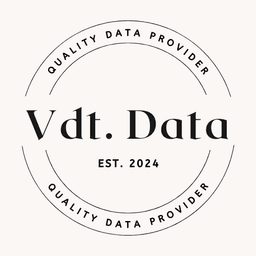Aviation Infrastructure Database
Aerospace and Aviation
Tags and Keywords
Trusted By




"No reviews yet"
Free
About
This dataset contains information about airports and heliports worldwide, including their locations, identifiers, elevation, and classification. It is valuable for aviation research, geographic analysis, and air transportation studies, providing insights into airport distribution, accessibility, and infrastructure.
Dataset Features
- WA_ID: Unique identifier for each airport or heliport.
- Ident: The official airport identifier.
- Type: Classification of the facility (e.g., heliport, small airport).
- Name: The official name of the airport or heliport.
- elevation_ft: The elevation of the airport above sea level (in feet).
- iso_country: The country where the airport is located (ISO code).
- iso_region: The region within the country where the airport is located (ISO code).
- Municipality: The city or town where the airport is situated.
- gps_code: The GPS code assigned to the airport.
- local_code: The local code assigned to the airport by regional authorities.
- Coordinates: The latitude and longitude of the airport location.
Distribution
- Data Volume: 28285 rows and 11 columns.
- Format: Tabular dataset suitable for analysis in CSV, Excel, or database formats.
Usage
This dataset is ideal for a variety of applications:
- Aviation Analysis: Studying airport distribution, infrastructure, and accessibility.
- Geospatial Research: Mapping airport locations and analyzing their geographic significance.
- Air Traffic Management: Supporting air transportation planning and logistics.
- Emergency Planning: Identifying nearby airports for disaster response and relief efforts.
Coverage
- Geographic Coverage: Global (includes airports from different countries and regions).
- Demographics: Covers aviation infrastructure rather than population demographics.
License
CC0
Who Can Use It
- Data Scientists: To develop models for airport accessibility and aviation insights.
- Researchers: To study aviation networks, transportation logistics, and infrastructure planning.
- Businesses: To enhance travel-related applications, logistics, and navigation systems.
- Government & Planners: For transportation planning and emergency response coordination.
Loading...
Free
Download Dataset in CSV Format
Recommended Datasets
Loading recommendations...
